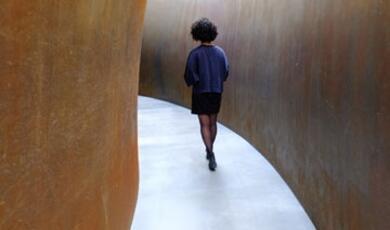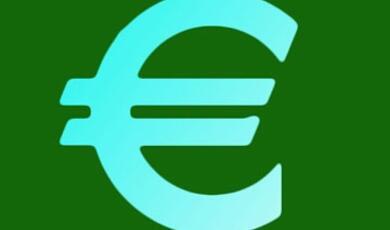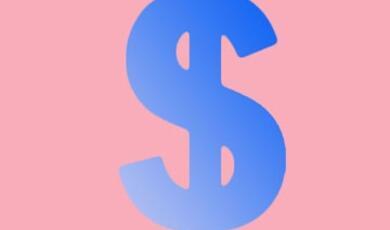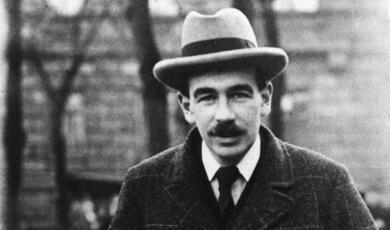How to Finance a Company
Share
- Details
- Text
- Audio
- Downloads
- Extra Reading
How should companies raise money?
This lecture will look at both debt (bank loans and bonds) and equity (shares given to other founders, or sold on the stock market). It will analyse how a company should choose between debt and equity and explain how many factors that companies – and even highly-paid investment banks – focus on are actually irrelevant. It will explain how financial decisions, stock valuations, and risk change in the presence of debt.
Download Text
How to Finance a Company
Professor Alex Edmans
7th June 2022
Sources of Finance
There are two main sources of finance for a company, debt and equity.
Debt is borrowing, similar to a citizen taking out a mortgage or personal loan. The company pays back interest every so often, and the loan lasts for a certain maturity (e.g., 10 years). The borrower and lender agree on the:
- Principal: the amount of the loan
- Maturity
- Interest rate (as a % of principal) and how often the interest is paid, e.g., every year or every month.
- Principal repayment terms. With mortgages, you pay back some principal every month. With bonds, you pay back the entire principal upon maturity.
Because the payment terms of debt are fixed, debt is known as fixed income. If the company fails to make the required interest or principal payments, it’s in default and debtholders can take control of the business, similar to a bank repossessing a house.
Equity is selling a share in your business. At the start, you might sell it to your business partners[1] or offer some shares to new employees. Slightly later, you may raise equity from angel investors (people) or venture capitalists (investment companies). Eventually, you might go public and raise money from many investors – see Lecture 2, How the Financial System Works, for more details.
Any dividends that you pay to yourself must be shared with other equity holders in proportion to their ownership stake. Moreover, you can’t pay out dividends to equity holders unless you’ve made any promised payments to debtholders first. Thus, debtholders are senior and equity holders are junior – they can only get paid after all debtholders get paid.
Thus, the payments to equity holders are uncertain. They only get what’s left after debtholders have paid – the residual – and are thus known as residual claimants. Since equity holders (= shareholders) own a share of the company, they have voting rights, such as the right to vote on who serves on the board of directors, that monitors management and ensures it acts in shareholders’ interest.
The following table illustrates some differences between debt and equity.
Debt Equity
What is it? Borrowing Selling part of your company
Source of funds Banks, bondholders Business partners, employees,venture capitalists, shareholders
Future payments Must pay interest and principal. May pay dividends. Any dividends to yourself must be shared with others
Rights. None (except may impose covenants), unless firm is bankrupt Voting rights
Priority Senior Junior
How Debt Affects the Returns to Equity
This lecture is about whether a company should finance itself purely with debt, purely with equity, or a bit of both. How a company finances itself is known as its capital structure, since debt and equity are both sources of capital, i.e., financing. We’ll look at the capital structure decision from the perspective of you, the founder, who’s an equity holder in the business.
Let’s say your need £500 to start your company. After you’ve started it, your company’s value depends on the state of the economy. There are two potential states: Good, in which case it’s worth £600 (+20% on your original investment), and Bad, in which case it’s worth £400 (-20%). We’ll consider three cases:
Self-Financing
If you don’t borrow at all, then you need to finance the entire £500 yourself. So, you bear the full 20% gains and losses. Your payoff is given in the bottom line below:
Unlevered Good Bad
V = 500 V = 600 V = 400
D = 0 D = 0 D = 0
E = 500 E = 600 (+20%) E = 400 (-20%)
In the above table, V is the total value of the firm, sometimes referred to as aggregate value or enterprise value. E is the value of equity and D is the value of debt. Unlevered means “without debt” (while levered means “with debt”).
Outside Equity
What if you only had £100 to begin with, so couldn’t finance the entire £500 yourself? You raise the remaining £400 by selling 80% of your company (£400 / £500) as outside equity (OE) to outside shareholders. You own the remaining 20%, worth £100. Your stake is known as inside equity (IE), as it’s owned by you, the insider. All shareholders – both outside and inside shareholders – share equally in the company’s gains and losses. So, in the good state, both you and outside shareholders gain 20%, and in the bad state, you all lose 20%. This is exactly the same as in the first case, except your 20% gains and losses are on an initial investment of £100, not £500.
Outside Equity Good Bad
V = 500 V = 600 V = 400
OE = 400 OE = 480 OE = 320
IE = 100 IE = 120 (+20%) IE = 80 (-20%)
Debt
Let’s stick with the case in which you have only have £100 to begin with. But instead of raising the £400 by selling 80% of your company, you do so by borrowing £400 from the bank. Assuming a zero-interest rate for simplicity, the payoffs to debt and equity are as follows:
Levered Good Bad
V = 500 V = 600 V = 400
D = 400 D = 400 D = 400
E = 100 E = 200 (+100%) E = 0 (-100%)
In the Good state, you benefit from the entire £100 gain in firm value from £500 to £600. You don’t need to share any of your gains with the bank – you only need to pay back the £400 that you borrowed. So, your £100 initial investment has grown to £200: you’ve gained 100%, rather than 20%.
In the Bad state, you suffer the entire £100 loss in firm value from £500 to £400. The bank doesn’t share in any of the losses – you still need to pay it back the £400 that you borrowed. So, your initial £100 has been wiped out: you’ve lost 100%, rather than 20%.
The above example illustrates a general point: debt makes equity riskier. When you raise outside equity, your investors (other shareholders) share in both the gains from the good state and the losses from the Bad state. But if you instead raise debt, your investors (the bank or bondholders) don’t share in either the gains or the losses, since the payoffs to debt are fixed (remember it’s “fixed income”). So, you bear all the gains and losses yourself.
We often read statements like “debt is bad because it makes the company riskier”. Such a statement is only partially true:
- Debt makes equity (E) riskier, but not the company (V) riskier. The risk of the company – how much its value goes up in the good state and down in the Bad state – depends only on its business risk (see Lecture 4, How to Measure and Manage Risk), i.e., how sensitive its business is to the state of the economy. For example, luxury goods (e.g., Rolex watches) have high business risk as people only buy them in a boom; consumer goods (e.g., food) have low business risk as people still buy them in a recession. This sensitivity results entirely from what products the company sells and is nothing to do with its leverage. Regardless of how much debt there is, V = 600 in the good state and V = 400 in the Bad state.
- Even though debt makes equity riskier, it’s not bad. The Bad state is worse, but the good state is better. This increases your incentives to bring about the good state through hard work. This is why private equity firms take on a lot of debt when they invest in companies – to incentivise the manager to create value.
Is Debt Better Than Equity?
That last section showed that debt increases the risk of equity. But we ignored the cost of debt – how much interest we need to pay the bank (we unrealistically assumed it was zero). We also ignored the cost of equity – the return that we’d need to give outside shareholders to compensate for the risk that they bear, which we covered in Lecture 4, How to Measure and Manage Risk.
Since debt is senior to equity, it’s less risky. In the most recent table, Debt bears no risk (the bank always gets £400, regardless of the state) because it’s paid ahead of equity; Equity bears the entire risk. So, the cost of debt, rD, is always less than the cost of equity, rE. Equity holders demand a higher return than debtholders because equity is riskier than debt.[2]
This leads to many people believing that debt is “cheaper” than equity, and so companies can increase their value by financing themselves by debt rather than equity. Consider the following example:
Unlevered
You set up GreshCo, which will generate earnings of £1,500 forever. GreshCo will pays out all its earnings, so dividends are £1,500. Shareholders require a 15% return (obtained from the Capital Asset Pricing Model: see Lecture 4). You’d like to divide your company up into 1,000 shares. How much can you sell each share for?
The value of GreshCo is the value of equity, since there’s no debt. From Lecture 5 (How to Value a Stock), this value is the present value of future dividends, i.e.
D1r-g=£1,50015%=£10,000
where g = 0: GreshCo generates earnings of £1,500 forever, so there’s no growth. Thus, each share is worth £10,0001,000=£10.
Let’s sanity check this. Earnings and dividends per share are £1,5001,000=£1.50, so a shareholder obtains a £1.50£10=15% return – which is exactly what she requires.
Levered
Now the bank offers to lend £5,000 to you at a cost of debt (or interest rate) of 10%. This is less than the cost of equity of 15% so debt seems cheaper. The bank says that, because debt is cheaper than equity, your earnings per share will go up from £1.50. Is the bank right?
To calculate the new earnings per share, we need the new earnings, and the new number of shares. Let’s do each step in turn:
- Earnings. Earnings are no longer £1,500, since GreshCo needs to pay interest on its debt. £5,000 of debt at a 10% interest rate is £500 of interest, so earnings are now £1,500 - £500 = £1,000.
- Shares. Since the bank is now lending £5,000, shareholders’ stake in the firm is now only £10,000 - £5,000 = £5,000. So, you can now only sell 500 shares at £10 each, not 1,000 anymore.
- This makes sense: since you need to pay interest, shareholders will only still be willing to pay £10 if the earnings are shared with fewer other owners.
So, earnings per share are now £1,000500=£2. The bank was right – earnings per share have gone up! This seems to be obviously good for GreshCo shareholders. Indeed, if we use the valuation formula P=D1r-g=215%=£13.33 (remember, GreshCo pays out all its earnings as dividends, so earnings per share of £2 means dividends per share of £2), we see that the stock price rises from £10 to £13.33.
If true, the implications are profound. To create shareholder value, GreshCo doesn’t need to change its operations (what it does). It doesn’t need to make better widgets, improve its marketing, or reduce its raw material costs – it still makes £1,500 per year from its operations. It can simply change its financing (how it funds what it does). No wonder bankers get so well-paid – just by changing a company’s financing, they can make it more valuable.
But there’s a catch. Remember from Lecture 4 (How to Measure and Manage Risk) that shareholders care not only about return, but also risk. More precisely, they care about systematic risk – the risk that’s shared with the rest of the market (e.g., vulnerability to economic conditions), but not idiosyncratic risk – risks that are unique to one company in isolation. In turn, systematic risk is driven by two factors:
- Business Risk: how sensitive the company’s business is to the state of the economy, such as the luxury vs. consumer goods comparison we mentioned earlier. This is the risk we studied in Lecture 4.
- Financial Risk: this is the risk we’ve studied in today’s lecture. The greater the amount of debt a company takes on, the riskier it is for shareholders – they’re more sensitive to booms and recessions.
The CAPM (r = rf + β(rm – rf)) shows how much extra return shareholders should get for bearing business risk.[3] Thanks to a famous 1958 paper by Modigliani and Miller[4], we can calculate the extra return that shareholders should receive for bearing financial risk. It’s given by the following formula:
rL=rU+(rU-rD)DE
where rU is return shareholders should get from an unlevered firm, and rL is return shareholders should get from a levered firm with D of debt and E of equity.
Let’s apply this formula to GreshCo. Remember that the cost of equity was 15% when it was unlevered; the cost of debt is 10%, and after it takes on debt financing, there’s £5,000 of debt and £5,000 of equity. So, we have:
rL=15%+15%-10%£5,000£5,000=20%
When we calculated the stock price as P=215%=£13.33, we made the mistake of assuming that the cost of equity is still 15%. This is wrong because, when the firm takes on debt, equity is riskier and so shareholders require a higher return. We’ve shown that the cost of equity goes up to 20%. As a result, the actual stock price is
P=220%=£10
i.e., exactly as before. Even though debt is cheaper than equity, and earnings per share go up, shareholders are no better off.
The Modigliani-Miller Theorem
This is the famous Modigliani and Miller theorem – that, under certain conditions, the value of a firm is independent of its capital structure. This is one of the most famous results in finance, but to appreciate its significance we need to first understand its context.
Before Modigliani and Miller came along, slick investment bankers were earning fat fees from companies using the arguments that we made earlier in this section. Since debt is cheaper than equity, if companies finance themselves with more debt, they’ll increase their earnings per share. And they were right – we saw that earnings per share indeed go up. So, some clients thought that they didn’t put blood, sweat, and tears into increasing earnings per share through better products, superior marketing, and more efficient production. Doing so would be a lot of hard work. Bankers offered a much simpler way of increasing earnings per share – just take on more debt.
But Modigliani and Miller highlighted a major flaw with the above argument. There’s a critical difference between increasing your earnings per share through more efficient manufacturing, and through taking on more debt:
- More efficient manufacturing doesn’t change the risk of your company, and thus doesn’t change your cost of equity (which stays at 15%).
- Taking on more debt increases the risk of your company, and thus increases your cost of equity. Moreover, they proved that the increase in the cost of equity fully offset the increase in earnings per share, leaving the stock price unchanged.
So, Modigliani and Miller said that companies shouldn’t tear their hair out trying to come up with the best capital structure. It doesn’t matter how they finance themselves – debt and equity are equally as good as each other. Sure, the former is cheaper, but you get what you pay for – you expose yourself to more risk. Instead, CEOs should show the bankers the door, and instead focus on the operational side of the business – better products, superior marketing, and more efficient production. In short:
- Companies should focus on what they do, not how they finance it.
- A company’s value comes from its operational or real activities, not its financial activities.
- Capital structure changes how the pie is split between debt and equity, not the size of the pie.
Even senior business leaders get this wrong. For example, former Deutsche Bank CEO Josef Ackermann objected to regulators asking banks to use less debt, claiming this would “depress ROE [return on equity] to levels that make investment into the banking sector unattractive relative to other business sectors”. It’s true that the return on equity will fall, but the return that equity holders require will also fall because banks are less risky. So, banks become no less attractive investments.
So Why Might Capital Structure Matter?
But capital structure does seem to matter in the real world:
- Stock prices fall when a company issues equity.
- Stock prices rise when a company raises debt to buy back equity.
- Private equity firms increase debt when taking a company private.
So, were Modigliani-Miller wrong? No, but their theorem may only apply in particular circumstances. They argued that under certain conditions, the value of a firm is independent of its capital structure. These conditions are that there are no capital market imperfections, where other parties (not just debtholders and equity holders) might take from the pie.
Taxes
The most important imperfection is taxes. The value that a company creates doesn’t just go to debtholders and equity holders – part of the pie is captured by the government. This matters because the interest you pay to debtholders is tax-deductible, but the dividends you pay to equity holders are not. In other words, you’re allowed to deduct interest when you calculate your company’s profits; lower profits mean lower taxes, and so debt is valuable to reduce your taxes. The following example illustrates:
Unlevered Firm Levered Firm
Operating Income 1,500 1,500
Interest 0 (500)
Profit Before Tax 1,500 1,000
Tax @ 20% (300) (200)
Net Income 1,200 800
Number of shares 1,000 1,000 - £5000/£9 = 444
Earnings per share £1.20 £1.80
Share price £1.20/15% = £8 £1.80/20% = £9
Let’s start with the unlevered firm. As before, its earnings are £1,500, but because of the 20% tax rate, we have to pay £300 in taxes. So net income is only £1,200, and earnings per share are now only £1.20, not £1.50 anymore. So, the share price is only £8, not £10.
Now we’ll add £5,000 of debt, as we did before. Also as before, the interest rate is 10% so we have to pay £500 of interest. The Profit Before Tax falls from £1,500 to £1,000, so the 20% tax rate now only means £200 of taxes, not £300. So, our net income falls from £1,200 to £800 – only by £400, not by the full £500, because we’ve saved £100 of taxes. This is known as a tax shield: interest shields a company from taxes.
Remember that without taxes, adding debt increases your earnings per share E and the cost of equity r in the same proportion, so the stock price P=Er is unchanged. With taxes, the cost of equity still goes up from 10% to 15% – debt always makes equity riskier, regardless of whether there are taxes. But earnings per share go up by more because of the tax savings. So, the stock price rises from £8 to £9. Thus, when there are taxes, debt creates shareholder value by reducing taxes.
Incentives
A second imperfection is agency costs. This is when the management of a company takes part of the pie through paying themselves too much, or coasting and preferring the quiet life over innovation. As we saw earlier, debt is beneficial to give management incentives to work hard and ensure the good state. This is because management captures the upside from good performance and doesn’t have to share it with debtholders. If the company instead raised equity, management would have to share the upside with outside equity holders.
Bankruptcy Costs
So, we’ve seen two big advantages of debt – it reduces taxes, and it improves incentives. But there’s one important disadvantage – it increases the risk of bankruptcy.
Why is bankruptcy costly? This seems an absurd question. Ever since we learned to play Monopoly as kids, we learned that bankruptcy is bad. But actually, it’s more complex than that.
Let’s consider an unlevered firm. Since it has no debt, it can’t go bankrupt. But Bad states are still bad for it, even though it doesn’t go bankrupt:
Unlevered Bad
V = 500 V = 400
D = 0 D = 0
E = 500 E = 400
Due to the Bad state, firm value has gone down by £100. Even though the firm doesn’t go bankrupt, it’s still bad for shareholders as they lose £100.
Now consider the same firm, but initially financed by £450 of debt and £50 of equity:
Levered Bad
V = 500 V = 400
D = 450 D = 400
E = 50 E = 0
Here, the firm is now bankrupt in the Bad state. But shareholders only lose the £50 of debt that they invested. Half of the £100 loss is borne by debtholders, as they’re only repaid £400 not £450. Because of limited liability, shareholders don’t need to stump up another £50 from their own pocket to make debtholders whole (see Lecture 1, How to Save and Invest).
So, it looks like bankruptcy is good rather than bad! It allows shareholders to reduce their losses in bad states since they can walk away and invoke limited liability. Indeed, in real life, people and companies sometimes voluntarily file for bankruptcy, allowing themselves to walk away from their creditors. That they do so voluntarily suggests it’s not obvious that bankruptcy is bad.
Thus, when we ask, “why is bankruptcy costly?” we’re asking a subtle question. A bad event (or set of events) had to happen for the firm to go bankrupt – the economy went into recession, or we suffered a product recall. We’re asking – why is bankruptcy plus the bad event any worse than the bad event alone? For several reasons:
- In reality, there won’t be just one debtholder. There might be many different debtholders – companies borrow from multiple banks and thousands of bondholders and may also owe money to employees and suppliers. They’ll each hire lawyers to argue that they should be paid before the other debtholders. These lawyers’ fees might mean that debtholders get only £350 in a bankruptcy, not £400.
- Some assets are intangible, and not worth anything in a bankruptcy. For example, many companies’ most valuable assets are their people, who will walk away in a bankruptcy. So, the value of the firm falls further, perhaps to £250.
- Even the assets that are tangible will fetch less in a fire sale, when they need to be sold all of a sudden (see Chapter 2, How the Financial System Works). For example, a “closing down” sale at a shop involves selling goods for a discounted price. So, maybe the value of the firm falls even more to £200.
Since debtholders know they’ll be getting only £200 in a bankruptcy, not £400, they’ll respond in two ways when the firm takes on enough debt that bankruptcy becomes a concern:
- Charge a higher interest rate. In the earlier example, the interest rate rises above 10%.
- Impose covenants, which are restrictions on the investments a company can make, to reduce the risk it goes bankrupt.
Both are costly to shareholders. The first directly increases the cost of debt; the second restricts the firm from making good investments.
So, we have a trade-off theory of capital structure. When a company chooses how much debt to have, it balances the benefits of debt (interest tax shields and stronger incentives) with the costs of debt (greater bankruptcy risk). Interestingly, the benefits and costs of debt will vary across companies. For example, in a start-up company:
- Few taxes are paid to begin with, since start-ups typically aren’t profitable. Thus, the tax shields of debt aren’t a huge benefit.
- The founders already have strong incentives to make the company a success, since it’s their company. Thus, the incentive effects of debt aren’t a huge benefit.
- Bankruptcy is very costly, since start-ups’ main assets are intangible (e.g., ideas and people) which are worth little in bankruptcy. Thus, the bankruptcy risk of debt is a significant cost.
For all of these reasons, start-ups have little debt. In contrast, for all three reasons, profitable, stable, mature companies typically have more debt. This is why bankers provide a useful service advising clients on their capital structure – the optimal amount of debt varies from firm to firm. Notice that the factors that influence the debt level are all market imperfections (taxes, incentives, and bankruptcy costs) – the importance of which varies from firm to firm – not the simple but incorrect idea that “debt is cheaper than equity” which Modigliani-Miller ruled out. If debt were indeed cheaper than equity, then every company would have 100% debt financing. The optimal capital structure would be one-size-fits-all, and there would no need for expert advice from slick bankers – or unslick finance professors.
© Professor Alex Edmans, 2022
Some of this summary is adapted from Principles of Corporate Finance by Richard Brealey, Stewart Myers, Franklin Allen, and Alex Edmans (14th edition, 2022).
This is my final lecture as the Mercers’ School Memorial Professor of Business at Gresham College. It has been a huge pleasure to serve in this role and I thank you all for supporting these lectures. For those who are interested in seeing my other series, or other lectures in the current series, the titles of each of my series are as follows, and all are available on the Gresham College website:
- 2018-9: How Business Can Better Serve Society
- 2019-20: Business Skills for the 21st Century
- 2020-1: The Psychology of Finance
- 2021-2: The Principles of Finance
[1] Or, instead of starting the business yourself and selling it to business partners, you and your business partners may decide to start the business together and take an equal share.
[2] How do equity holders “demand” a return? With debt, it’s straightforward since how much they demand is the interest rate. With equity, there’s no explicit return promised when shareholders buy shares. Instead, it’s implicit. The price that shareholders will pay to buy shares needs to be low enough for shareholders to get the return they require.
[3] Technical note: This interpretation assumes an unlevered firm. Then, β is the beta of an unlevered firm and considers business risk only; then, r is the cost of equity for an unlevered firm, i.e., rU.
[4] Modigliani, Franco and Merton H. Miller (1958): “The Cost of Capital, Corporation Finance and the Theory of Investment.” American Economic Review 48, 261-297.
Part of:
This event was on Tue, 07 Jun 2022
Support Gresham
Gresham College has offered an outstanding education to the public free of charge for over 400 years. Today, Gresham College plays an important role in fostering a love of learning and a greater understanding of ourselves and the world around us. Your donation will help to widen our reach and to broaden our audience, allowing more people to benefit from a high-quality education from some of the brightest minds.


 Login
Login







